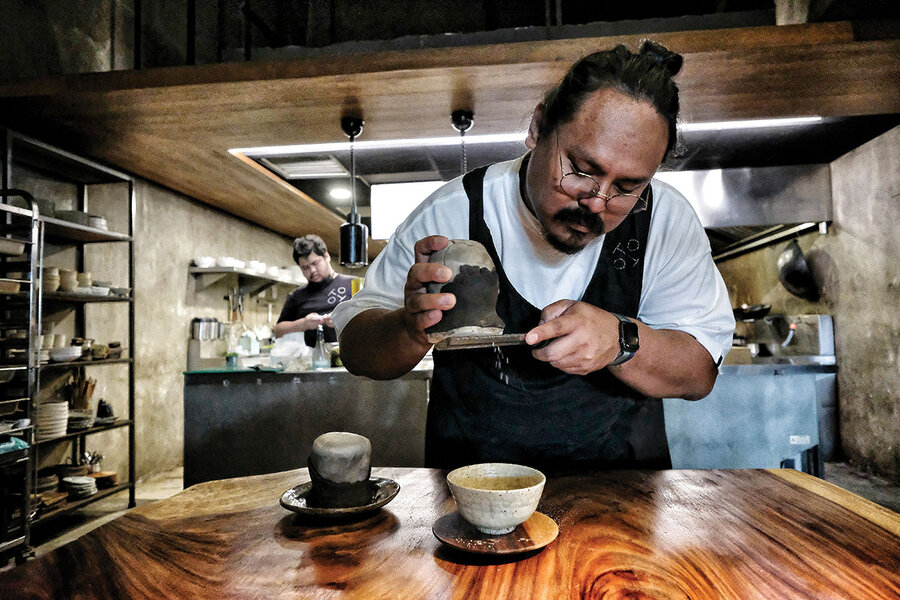In Pictures: How Filipino salt makers saved their craft
| Alburquerque, Philippines
Smoke escapes from a hut in front of the mangroves of Alburquerque, on the Philippine island of Bohol. The pleasant smell of wood, coconut, and salt burning over a slow fire signals that the making of artisanal salt has begun.
The process, which had been passed down for generations, results in a product known as asin tibuok. It’s an oval piece of salt compacted into a clay mold that has been partially broken by the intense heat of the fire. Asin tibuok is only produced in this small coastal town of about 11,000 inhabitants.
“For the next few days, we’ll be taking turns so that we can watch the fire 24 hours a day,” says Nestor Manongas, who keeps his eyes on the pile of smoldering wood in the center of the hut. “We will have to be pouring seawater [in] to prevent the flame from igniting so that the coconut shells are slowly consumed,” he says. “We can’t get distracted because the process could be ruined.”
This controlled combustion will result in gasang, a highly salt-concentrated ash, which is then placed in a funnel-shaped tank made of bamboo, where the salt is filtered out of the ash by pouring in more seawater. The resulting brine, called tasik, will be used to cook the asin tibuok pieces.
Mr. Manongas is one of the last remaining makers of this salt. But thanks to the determination of his family, this old trade, which had fallen into oblivion, has been revived.
“Against all odds, we kept going because we were determined to give it a new life,” says Crisologo Manongas, Nestor’s brother. He recalls how, little by little, asin tibuok became known, with university students making it the subject of their research, chefs from Manila discovering it, documentaries being made, and in 2017 a Filipino American entrepreneur based in California deciding to import the product to the United States. “The rest is history,” Crisologo says.
Their first shipment to the U.S. was 1,200 pieces, which took them a whole year to produce. The salt’s popularity worldwide has grown, and with it, interest in preserving the labor-intensive craft.
Nestor’s face shows his fatigue after having spent the first night staying awake to supervise the fire. “It’s not a job for lazy people,” he says.





